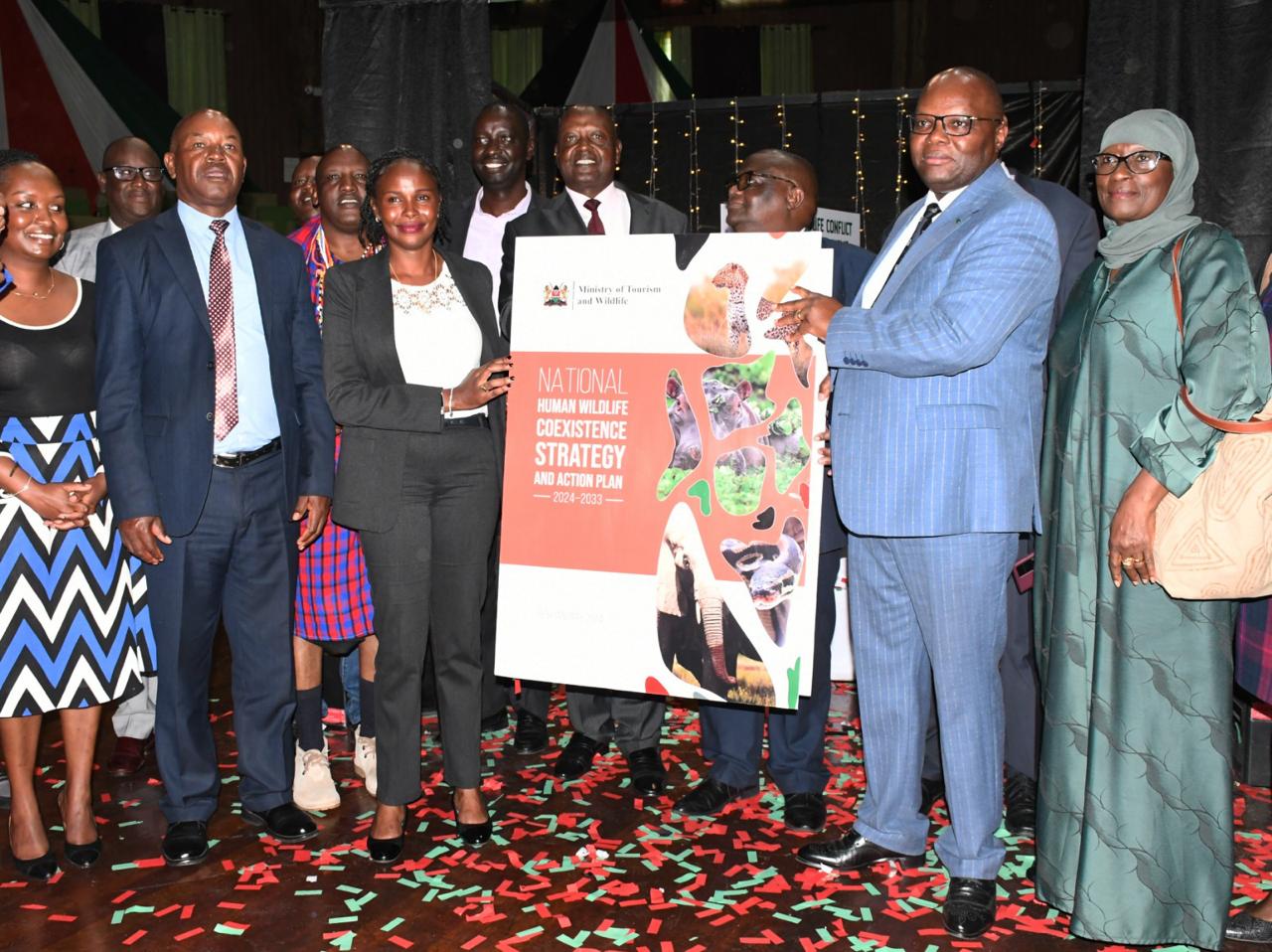
Date Published:
Kenya Wildlife Service (KWS), led by the Principal Secretary, State Department for Wildlife Silvia Museiya, Ministry of Tourism and Wildlife, marked a significant milestone with the official launch of the National Human-Wildlife Coexistence (HWC) Strategy and Action Plan 2024-2033. The event, held at the Bomas of Kenya, Nairobi, attracted key stakeholders to address pressing issues concerning the coexistence of humans and wildlife in the country.
Speaking during the launch, the PS emphasized the urgency of addressing human-wildlife conflicts, calling for immediate action, and compensation for affected communities. “Compensation for me is like affordable housing for the President, by hook or by crook it must happen.” She stated.
Her sentiment was echoed by both the KWS Chairman Board of Trustees Lt Gen (Rtd.) Walter Koipotan and Wildlife Research Training Institute Chairman, Dr. David Ole Nkedianye as they rallied individuals to take proactive steps towards coexistence, echoing the sentiment of the Wildlife Research and Training Institute (WRTI) Director Patrick Omondi, who stressed the importance of technological innovations and research in mitigating conflict impacts.
Dr. Erustus Kanga, Director General of Kenya Wildlife Service, urged attendees to shift their focus from mere discussions to tangible implementation of the strategy, emphasizing the need for impactful measures and rapid response mechanisms.
The strategy encompasses five crucial components aimed at fostering sustainable wildlife conservation while effectively mitigating human-wildlife conflicts:
Land and Space Management: Emphasizing the importance of sustainable land use practices to ensure adequate space for both wildlife and human settlements. This component seeks to strike a balance between conservation efforts and the needs of the local communities.
Innovative Mitigation Strategies: Introducing innovative, effective, and affordable approaches to mitigate human-wildlife conflicts. This involves the implementation of technologies and methods tailored to local contexts to ensure their accessibility and efficiency.
Capacity Enhancement: Enhancing the capacity of relevant stakeholders to prevent wildlife damage before conflicts arise. By providing training and resources, communities and agencies can proactively address potential conflicts and minimize their impact on both humans and wildlife.
Institutional Reforms: Advocating institutional changes within wildlife management agencies to streamline processes and improve efficiency. This includes revising policies, enhancing coordination among relevant authorities, and ensuring accountability in wildlife conservation.
Wildlife Economy and Compensation: Recognizing the economic importance of wildlife while ensuring fair compensation for losses incurred due to human-wildlife conflicts. This component highlights the need to balance conservation goals with the socioeconomic interests of local communities and promote sustainable livelihoods alongside wildlife conservation.
Moving forward, the success of the National Human-Wildlife Coexistence Strategy and Action Plan hinges on collaborative efforts, innovative approaches, and sustained commitment from all stakeholders. By prioritizing effective implementation and adaptive management practices, Kenya aims to foster harmonious coexistence between humans and wildlife, while safeguarding biodiversity for future generations.





